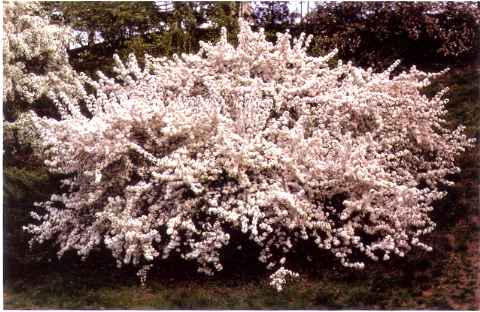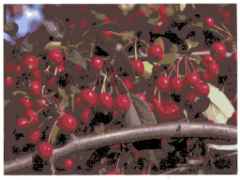 |
 |
 |
|
|
|
|
Crabapple...A Vividly Colorful Ornamental Tree for Spring & Fall
 |
 |
 |
|
|
|
|
Last June I attended a required pesticide training course in Germantown, Maryland produced by the University of Maryland extension service. My license was due for renewal on June 30th and I needed 8 hours training for renewal. It was called "The Procrastinators Pesticide Re-Certification Course". The course description seemed a natural fit. After all, here I sit writing my Friday column at 3:30 on Friday afternoon. Anyway... One of the speakers from the University of Pennsylvania was intensely involved in test plots and research of Crabapples (Genus Malus). Like many other apples, crabapples are known for many diseases such as rust, scab, fireblight, and so forth. This was how this speaker tied into this pesticide program.
We tend to avoid spraying pesticides as much as possible in this day and age, thus the development of "spray free", disease resistant apple trees. The same developments have occurred in the selection of newer cultivars of crabapples. We crave disease resistant plants which do not need chemical protection. I had not given crabapples a lot of thought until the slide show broke out. Crabapples bloom once a year, so you don't tend to dwell on them. The reason we don't think about crabapples when choosing a flowering ornamental tree is largely because of their previous bad reputation for diseases as well as production messy little apples often ground into the sidewalk by the pitter-patter of little (and big) feet. By the time I left the seminar, I was charged up about those wonderful crabapples.
As a result of extensive testing through decades, crabapple with disease resistance and good fruit retention have been identified. Good fruit retention means wild birds will get the fruit, not your Nikes! The spring blossoms come in array of colors and bloom profusely over every square inch of bare branch with electrifying beauty. If that's not good enough, choose your size and color of fruit for another show in the late fall. Lastly, crabapples are so versatile because they have a height range of 30 feet down to 6 feet. Examples of some crabapple forms include upright habit, prostrate sprawling trees, and graceful weeping trees!
We were given an extensive chart with characteristics of many crabapples
- good and bad. Below are some samples of some better varieties,
illustrating a wide array of shapes and colors. I was reminded that
one should never form and hold an impression too long. Such notions
can cause us to miss the beauty of life.
|
|
|
|
|
|
|
|
|
| Adirondack | white | red | narrow upright | none | none | Very good | 20x10 |
| Harvest
Gold
(Hargozam) |
white | gold | upright | some | slight | Good | 25x20 |
| Louisa | true pink | lemon gold | weeping | none | none | Good | 15x20 |
| Mary Potter | white | red | low spread | slight | none | Good | 8x20 |
| Molten Lava | white | orange red | broad weeping | trace | moderate | Very Good | 15x15 |
| Prairifire | red | red purple | compact round | none | none | Exciting | 20x20 |
| Red Splendor | pink | dark red | weeping | slight | none | Good | 25x25 |
| Sargentii | white | red | spread shrub | none | none | Good | 6x8 |
| Zumi | white | bright red | horizontal | trace | some | Very Good | 25x30 |
Andy Lynn